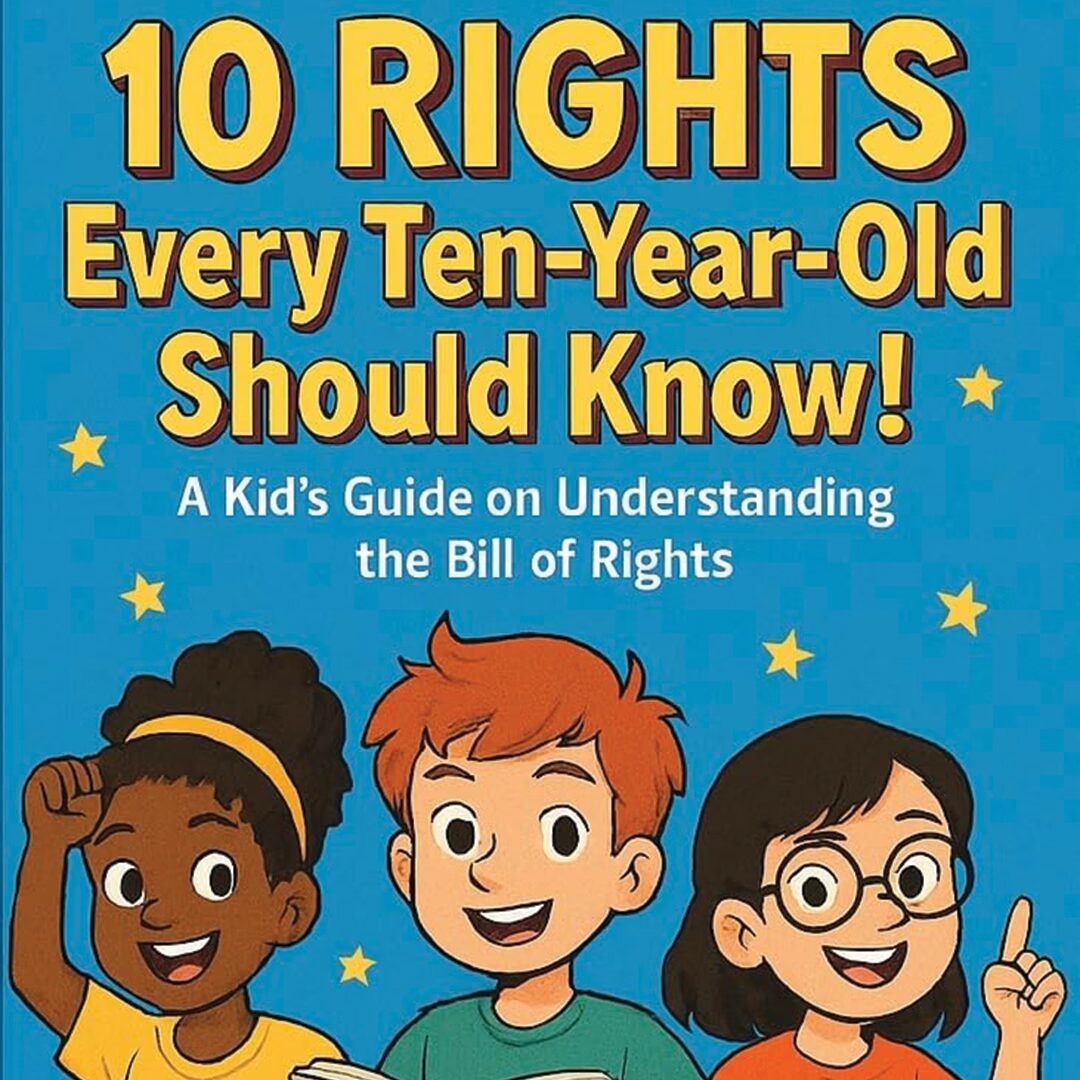
As a writer deeply invested in making the law more accessible, I recently published a children’s book titled 10 Rights Every Ten-Year-Old Should Know. At its heart, the book is about one thing: explaining the Bill of Rights in a way that even a 10-year-old can understand.
The idea didn’t come to me all at once. It grew out of years of writing about the Constitution and its role in everyday life. Over time, I found myself asking an increasingly persistent question: Why is it so difficult to understand the very rights that govern us? If the Bill of Rights applies to everyone in America, shouldn’t everyone be able to talk about it, regardless of age, background, or education?
That question stuck with me. The more I thought about it, the more I realized how late we tend to introduce these concepts to young people. In many schools, lessons on the Constitution are pushed to later grades, often taught in a dry, formal way that doesn’t connect with the reality kids live every day. The language is complex, the context can feel far removed, and the relevance often goes unexplained.
But what if those concepts didn’t have to be abstract or inaccessible? What if we could explain the core rights that shape our country in a way that felt familiar and understandable, even to a child?
So I started writing. I wasn’t trying to produce a textbook or an official legal document. I wanted to create something that spoke directly to kids. I wanted it to feel like a conversation rather than a lecture. The idea was to present each of the first ten amendments in a way that made sense to a young mind—using clear language, relatable examples, and a tone that respects their intelligence without overwhelming them.
10 Rights Every Ten-Year-Old Should Know was the result. It is a short, straightforward guide to the Bill of Rights, written with children in mind but grounded in a larger belief: that this information belongs to all of us. The rights in the Constitution are not just for lawyers, judges, or politicians. They are for every American. And that absolutely includes our kids.
I chose to self-publish this book, not with commercial success in mind, but because I believed in the importance of putting it into the world. I imagined parents sitting down with their children to talk through each chapter. I pictured teachers using the book as a bridge between social studies lessons and real-world understanding. Most of all, I hoped it could give kids a sense of ownership over their own rights.
The structure of the book is simple. Each chapter focuses on one amendment in the Bill of Rights, explained in a way that keeps the reader’s interest while still providing the necessary facts. These are not distant legal theories. They are everyday ideas that children already think about, even if they do not yet have the vocabulary to name them.
My motivation for writing this book was straightforward. I believe that legal knowledge should never feel out of reach. Too often, we treat the law like it belongs to a separate world—a world of courtrooms, complex statutes, and formal language. But the truth is that the law shapes our communities, our schools, and even our friendships. When we make legal education exclusive, we also make it less effective. That is especially true for young people, who are already learning how to navigate fairness, rules, and accountability in their daily lives.
When we introduce constitutional rights early, we help create the conditions for more informed, more confident citizens. Kids who understand their rights grow up more prepared to speak up for themselves and others. They learn how to ask questions. They begin to recognize fairness and unfairness not just as feelings, but as principles rooted in law. They start to see the legal system as something that should serve the people—not just govern them from a distance.
This book is only one small effort in a much larger mission. But I believe it matters. I believe we need more tools like this—books, lessons, and conversations that help children see themselves as participants in a shared civic life. Because when we teach young people that their voices count, we are not only educating them. We are strengthening our democracy.
The Bill of Rights is not just a historical document written centuries ago. It is a living framework for how we operate as a society today. The sooner our kids can make sense of it, the more they can contribute to shaping a future that is fair, just, and informed.
If 10 Rights Every Ten-Year-Old Should Know helps even one child begin that journey, then it has done its job.
Sonia Joseph is a high schooler passionate about law and civic education. Inspired to make legal concepts accessible, she wrote a children’s book about the Bill of Rights. Her goal is to help all people—especially young readers—understand the rights they are guaranteed under the U.S. Constitution.
To read more by Sonia, and to buy her book, visit her website at themistice.com.
